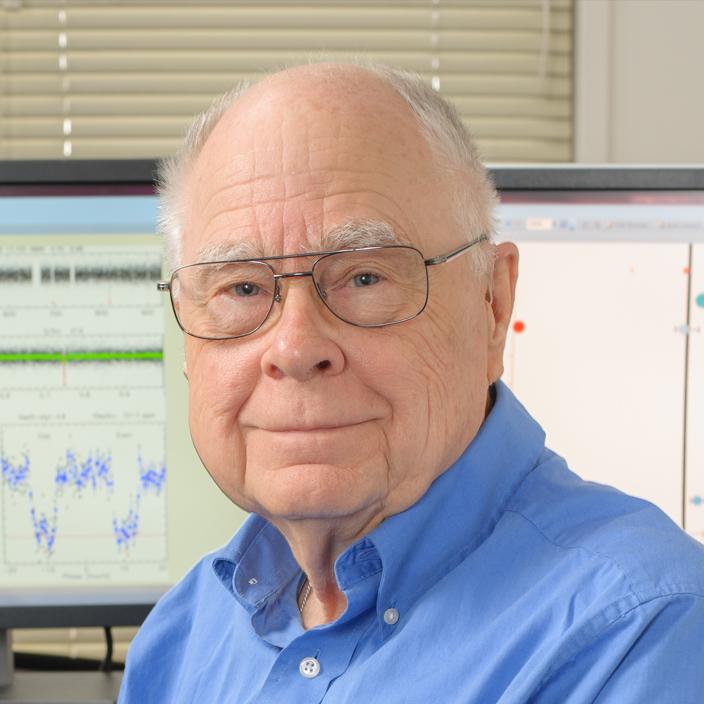
2016 Bower Science Award Theme: Exoplanets
For centuries, human beings have dreamed about other worlds beyond Earth, and the possibility of life upon them. At first, our observations were confined to our own solar system, to the planets we could see with our naked eyes and then with our telescopes. Later, as technology allowed us to perceive the true size of the universe, we wondered whether stars with Earth-like planets were common or rare in our galaxy. But the vast distances involved made it impossible to directly see exoplanets (extrasolar planets), and without another way to find them, the possibility of their existence seemed like an insoluble question.
More than any other single person in history, NASA’s William Borucki changed that. The planetary detection method and technology he pioneered were brought to fruition in the Kepler spacecraft. A specialized space telescope orbiting the Sun at a distance slightly greater than that of the Earth, Kepler is designed to find planets by detecting the incredibly tiny drop in a star's brightness when a planet passes across it. To date, Kepler has discovered more than a thousand exoplanets and detected an additional 3,700 candidates yet to be confirmed—many of which are small, rocky, Earth-size worlds. Before the launch of Kepler in 2009, relatively few planets beyond our solar system were known, mostly massive Jupiter-like worlds unlikely to harbor life. But in less than a decade, Kepler has revolutionized our view of the universe and humanity's place in it.
Borucki's scientific career has been centered on space exploration from its beginning. Born in Chicago in 1939, he earned a master's degree in physics from the University of Wisconsin–Madison in 1962, just in time to become immersed in the preparations for the Apollo moon missions of the 1960s. He joined the team at NASA Ames Research Center developing the heat shield for the Apollo Command Module, making it possible for returning lunar astronauts to survive their blazing reentry into Earth's atmosphere. With the successful conclusion of the Apollo missions, Borucki transferred into the Theoretical Studies Branch at Ames, which was then engaged in developing detailed atmospheric models of the effects of human activity on the ozone layer. While at NASA, he earned a master's degree in meteorology from California State University.
By the early 1980s, Borucki became interested in finding ways to detect exoplanets, specifically Earth-size worlds within a star's "habitable zone" capable of supporting life. With direct observation of such small bodies impossible at interstellar distances, he focused on the development of the stellar transit method—detecting the miniscule dimming of a star's light as a planet passes across it (just as a solar eclipse is caused by the moon moving between the Sun and Earth). But such dimming is infinitesimal and challenging to detect across a distance of light years. Borucki built and tested prototype instruments and organized several workshops with other scientists and engineers at NASA and the National Institute of Standards and Technology, striving to identify and develop an instrument capable of the necessary precision while simultaneously observing many thousands of stars.
In addition to devising new strategies for hunting planets, Borucki was also thinking about conditions on other worlds, specifically the characteristics of their atmospheres. He investigated lightning on other planets and its production of molecular species with both laboratory experiments and observations from Earth satellites and planetary space probes. This work culminated in his participation in the Atmospheric Structure Experiment on the Huygens probe, which penetrated the atmosphere of Saturn's largest moon, Titan, on the Cassini-Huygens mission in 2005.
But Borucki continued to cast his scientific gaze well beyond our solar system, proposing a space mission dedicated to finding Earth-size exoplanets. His proposals were promising and ingenious, but the technology required to realize them had not been demonstrated. Borucki tested newly developed photometers based on CCD light detectors on an automated telescope that his team built at the University of California’s Lick Observatory. The observatory results in combination with the results from a specially-developed laboratory facility demonstrated the photometer’s capability to detect the small signals from Earth-size planets while simultaneously monitoring thousands of stars. In 2001, after four rejected proposals in the preceding eight years, the Kepler mission was approved by NASA and Borucki was named its principal investigator.
Although delayed several times by a budget-strapped NASA, the Kepler spacecraft was launched in March 2009. It has proved to be one of the most successful human exploration endeavors in history, overcoming various challenges and even seemingly crippling technical problems to continue operating well beyond its planned lifetime. And it has confirmed that our galaxy alone contains not just a handful, but a staggering multitude of planets, many of which could potentially harbor life. As a bonus, Kepler has revolutionized the field of asteroseismology, in which brightness oscillations of stars provide clues to a star's internal structure and workings.
William Borucki officially retired from his post at NASA in July 2015, after more than 50 years spent developing new ways to explore the universe. Among his many awards are the Shaw Prize in Astronomy, the Henry Draper Medal from the National Academy of Sciences, the Lancelot Berkeley Prize from the American Astronomical Union, the Frank Drake Award from the SETI Institute, the NASA Exceptional Scientific Achievement Medal, and numerous other accolades from the National Air and Space Museum and the American Institute of Aeronautics and Astronautics.
But perhaps his greatest and ultimately most significant award will be the new perspective his work has given to humankind. It's true that, as Carl Sagan once observed, our Earth is merely a "pale blue dot" in the vastness of the cosmos, but through the work of William Borucki, we now know that it's not the only one—and because of that, we may not be alone in the universe.
Information as of March 2016

